Wedding Ring Guide
Welcome to the Blue Nile wedding ring guide, with a breakdown of everything you need to know to find the perfect symbol of your love.
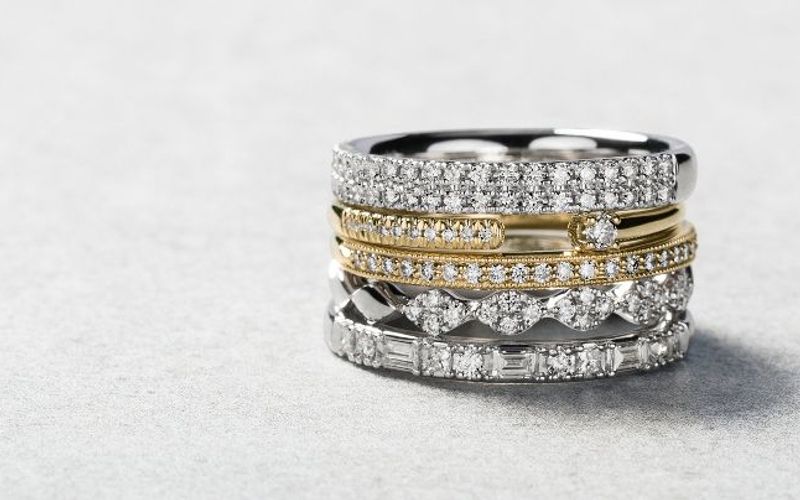
If you're wondering how to buy a wedding ring, you’ve come to the right place. Blue Nile experts will answer your most pressing questions, explain the meaning of a wedding ring, help you determine how to choose the right metal for your wedding band, and offer tips on how to design your wedding set with matching or unique pairings.

What Does A Wedding Ring Symbolize?
A wedding ring is a symbol that's both private and public. It's a sign of love and fidelity between you and your partner, and it also signifies to the rest of the world that you're in a committed relationship. Your beautiful wedding band is a celebration of the vows that you exchange on your wedding day, and your desire to be with your partner for eternity. While your engagement ring symbolizes the promise of marriage, it's the wedding ring that makes the marriage official.
Many of our customers wonder if a wedding ring should have diamonds. While we do offer many wedding ring styles that have diamonds set into the band, many of our most popular wedding rings for women and wedding rings for men are unadorned metal bands.
The Difference Between A Wedding Ring And Wedding Band
A wedding ring (or wedding band) is what a couple exchanges during their wedding ceremony. The terms are used interchangeably and mean the same thing.
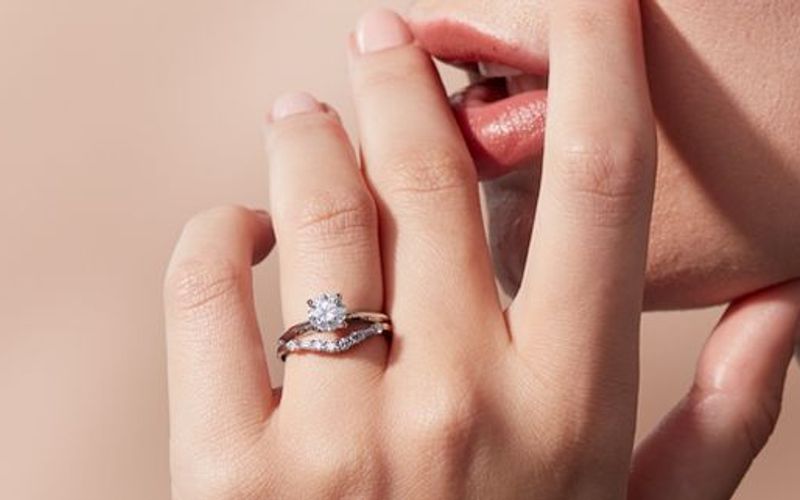
Wedding Rings For Women
The options for a women's wedding ring span everything from a very simple metal band to a much more elaborate style like a diamond eternity ring. A great way to start your search is by exploring Blue Nile's top ten styles for women where you can get an overview of our most popular designs, including classic platinum bands, platinum bands with micropavé diamonds, French pavé diamond eternity rings in yellow 18kt gold and 14k rose gold, and vintage-inspired styles with milgrain and fancy-shaped diamonds.
Combining Your Engagement Ring And Wedding Ring
The wedding ring is traditionally worn on the finger next to the pinky, on the left hand. This springs from the belief in ancient Greece that the ring finger was connected to the heart by a vein of love. On the day of their wedding ceremony, many women will temporarily move their engagement ring to their right hand. Once married with their wedding ring in place, they will move the engagement ring back to the left hand, leaving the wedding ring closest to the heart.
One of the most exciting developments that we've noticed over the last several years is that more and more couples are shopping for engagement rings together—and in many cases, thinking about how their choice of engagement ring and wedding bands synchronize, both stylistically and symbolically.
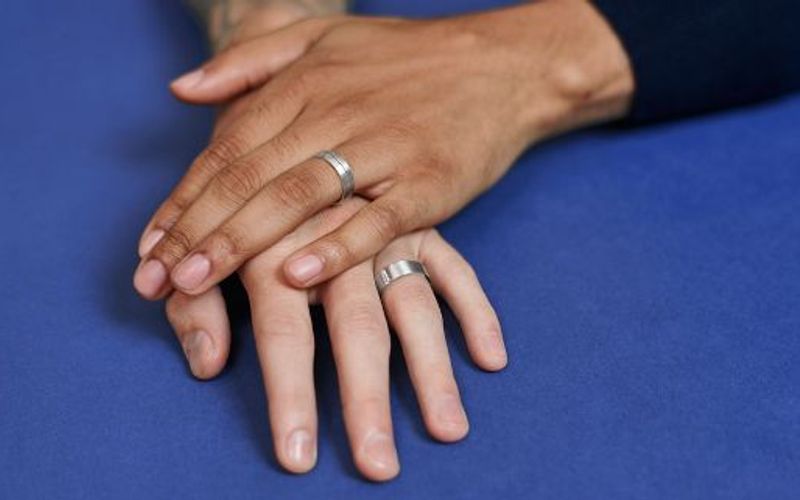
Wedding Rings For Men
Options for men's wedding rings are rapidly evolving and expanding. And while classic unadorned men's wedding bands in platinum, white gold and yellow gold are among our top sellers, we're excited to also offer beautiful designs in highly durable metals like cobalt, tantalum, titanium and tungsten, as well as wedding bands with channel-set diamonds, diamond pavé and engravable styles.
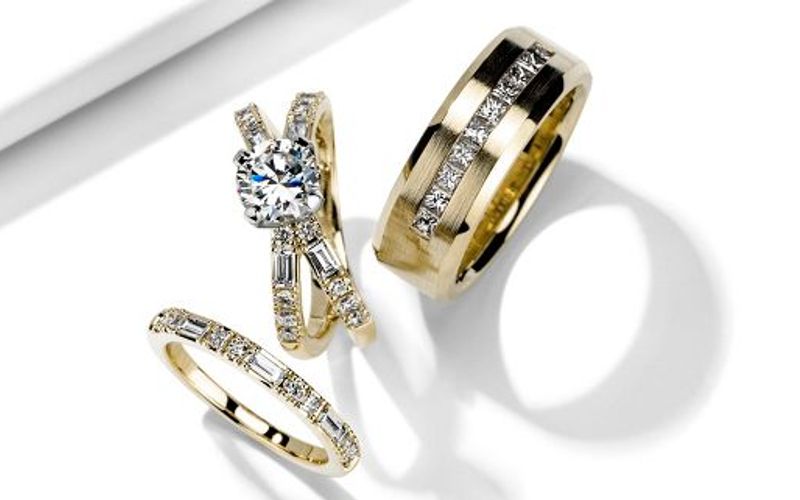
What Are Wedding Ring Sets
A wedding ring set includes an engagement ring plus matching his-and-her bands for the groom and bride. Jewelers typically distinguish between a wedding set and a bridal set, which does not include the groom's ring. Outside of the jewelry world, most people use the term wedding set for both combinations.
Popular Metals Used In Wedding Rings
Our wedding rings for women and men span timeless plain-metal styles to more elaborate designs with diamonds or other gemstones. You'll find hundreds of options in the most popular metals used for wedding rings, including platinum, yellow gold, white gold and rose gold.
Wedding rings made of platinum are widely admired in part because platinum is 95% pure and 30 times rarer than gold. Platinum is naturally hypoallergenic and its density and weight make it feel substantial and special. It also wears well over time. That said, platinum wedding bands are one of the more expensive options. Many people who prefer the look of white metal over yellow metal opt for a wedding ring in white gold, which has a platinum-like look with a lower price tag. If you're wondering about the best gold for wedding rings, you'll notice that our yellow gold wedding bands, rose gold wedding bands and white gold wedding bands are all available in 14k or 18k options because pure 24k gold is too soft for crafting wedding rings.
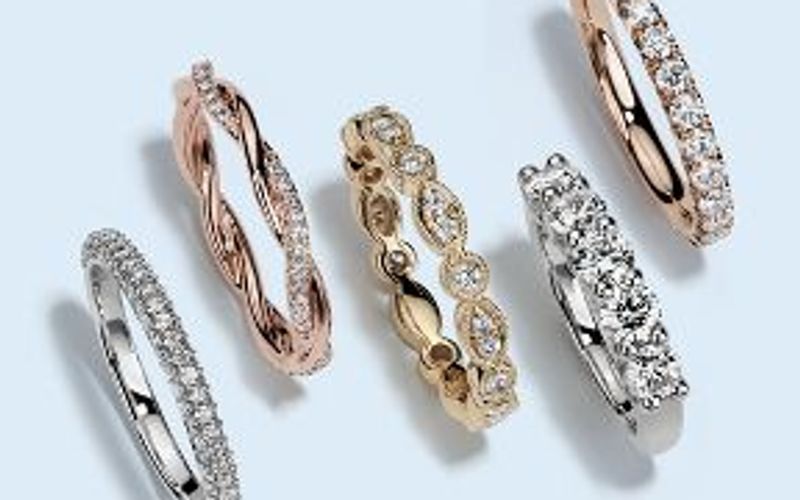
How Much Should You Spend On A Wedding Ring?
According to a study by The Knot, the average cost of a wedding ring for women in 2019 is $1,100 and the average cost of a men's wedding band is $510. However, the amount of money that you should spend on a wedding ring is as personal as the vows you exchange or the place you decide to say "I do." The good news is that Blue Nile offers hundreds of wedding ring styles for men and for women with beautiful options for every budget. You'll find classic metal wedding bands that start around $150 and decadent diamond platinum eternity bands over $30,000. There's something for everyone whether you're just getting married or ready to upgrade to celebrate a milestone anniversary.
Finding Your Ring Size
We have some great tips and tools for how to measure your ring size. The first method explains how to figure out your ring size with our printable guide and a ring that you already own as a point of reference. The second option is the most accurate, but requires a little bit of patience as you'll need to order our free ring sizer. (Both options are available via the link below.)